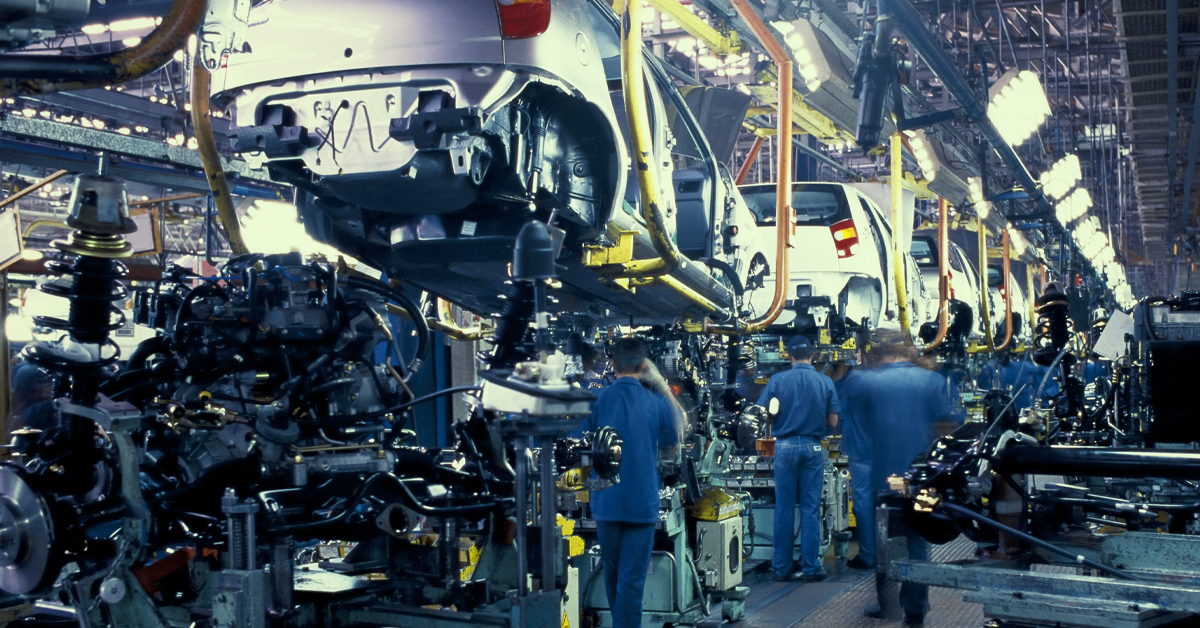Having developed the world’s first assembly line in 1913, Ford is widely regarded as the inventor of modern mass production. Similarly, Toyota later developed the Kaizen manufacturing method in the 1950s. This improvement practice was created to eliminate waste in manufacturing and has since been adopted by many other vertical sectors — albeit often labelled with a different name.
We are now at the brink of the next manufacturing revolution. But, how is the automotive sector leading the way?
Enable customization
Customization is of upmost importance for automotive. Today’s customers can demand a huge number of variations of vehicles and, naturally, this has consequences for the way production lines are organised and for the software required to facilitate these changes.
Just in Time (JIT) production, sometimes known as the Toyota Production System (TPS), has long been used in automotive. However, this methodology primarily aims to reduce production time and response from suppliers and to customers.
Unfortunately, this method is not ideal for the growing number of vehicle customisations which are being requested by automotive customers. Thankfully, Just in Sequence (JIS) production provides a solution.
Deploy JIS production
JIS is an enhancement of JIT. The method is primarily used to improve a production line’s ability and ease when managing multiple variations of a vehicle’s production.
The concept of JIS is straightforward. It provides a way to supply material to high-mix but low-volume production models, like those we see in automotive manufacturing.
Using JIS production, the delivery of parts and components is meticulously planned to ensure they are delivered to the assembly line in the exact sequence they are required. For example, because the colours of a vehicle’s side mirrors are often customizable, these components must be supplied in the correct sequence for the corresponding vehicle in the production line.
Imagine the following scenario on an assembly line. For the next few vehicles, some mirrors are white, while others have been ordered in the vehicle’s body colour. Providing these components to the assembly station in the correct sequence — matching the order in which the vehicles are arriving — allows the worker to easily mount the mirror onto the next vehicle in line without having to check that it is being attached to the right vehicle. This ensures no mistakes are made by the operator, without them having to cross reference order data for individual customisations.
Using JIS for this process also helps to reduce material build up, as it eliminates the need to store excess stock in inventory. Using the side mirror example, it is not economically viable to store every single colour variation of the side mirror. This is particularly important for highly customisable cars and those with non-standard colour options.
Deploying JIS production is a no-brainer. However, getting the process right relies on using the correct technology.
Mastering JIS production
Successful JIS production depends on providing the right information, to the right people, at the right time. Should communication go wrong, attempting JIS can actually disrupt the production line.
For instance, there is no way to predict if the transport of components will be disrupted — there may be an accident on route which causes a delay. With stocked inventory of parts, this would not be an issue. With JIS, failure to identify this delay could result in production stoppages. If there are no parts, there is no production.
For JIS production to succeed, intelligent software must be used to collect data from production, transfers and logistics. Importantly, this information must be visible, accurate and actioned consistently.
COPA-DATA’s zenon Software Platform, as an example, can successfully interact with various areas in which data is generated. This includes Customer Relationship Management (CRM) information, which can inform the manufacturer of the customer’s customisation specifications, transportation data on where the part is located and how long deliveries will take, as well as information from Enterprise Resource Planning (ERP) systems.
Combining this data will ensure the procurement, transportation and assembly of this part is synchronised seamlessly with the rest of production, enabling the operator to fit the component onto the vehicle in the most efficient way possible.
Automotive manufacturing has long been the forerunner of automation and the industry’s use of JIS production provides another shining example of how other sectors could improve already improved processes.

